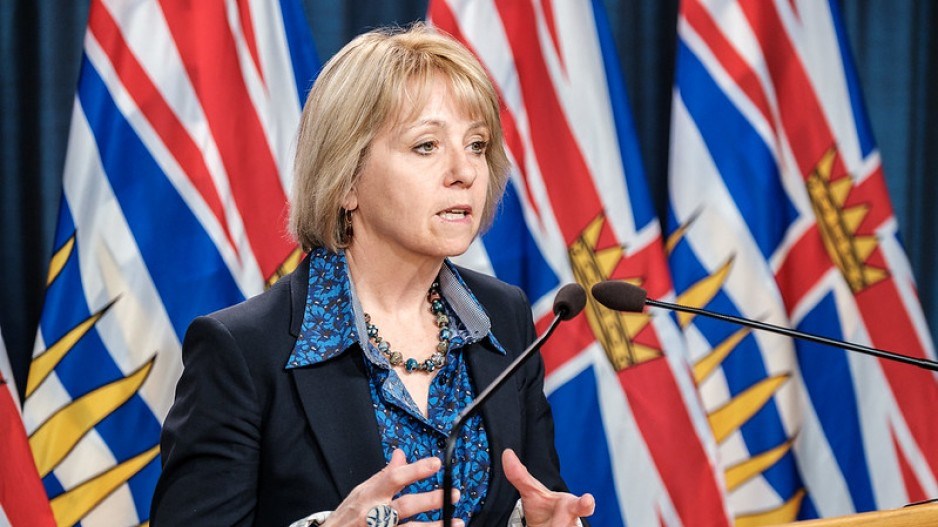B.C. won’t be lifting COVID-19-related restrictions any time soon in order to continue flattening the infection rate curve, provincial health officer Dr. Bonnie Henry said April 17.
“We have plateaued,” Henry said. “We have now started to decline.”
But, she warned, if the province were to return to 80% to 100% of regular human contact, B.C. would see a huge surge in critical care patient numbers between April 20 and May 20.
British Columbians therefore need to maintain social distancing begun in early March to continue the flattening of the infection rate. Henry attributed the rate slowdown to the collective actions of British Columbians.
“We’re not out of the period where we need to maintain these things,” she said during a technical briefing on provincial modelling of the infection. “It is essential that everyone continue to practice our distancing.”
Those affected range from an infant to a 102-year-old.
Henry said it takes three to six weeks to know if people will recover.
“We know we still face the potential of growth in cases and deaths in British Columbia,” the presentation said. “At any one point, there has been 100-150 in hospital.”
The presentation by Henry and Deputy Minister of Health Stephen Brown, stressed that B.C.’s case rate and intensive care (ICU) admission rate has been far below what was potential based on other jurisdictions’ experience and data.
EMBARGOED Technical Briefin... by Mark Falkenberg on Scribd
However, Brown and Henry said, the slowdown is due to public health action, not herd immunity.
They said B.C.’s epidemic curve has been well below projections based on data from Italy and Hubei, China. The province is looking more toward the experience of South Korea and, indeed, more at B.C.’s own data amassed since the infection first showed up in January.
“The death toll is particularly severe among the elderly and the frail,” Brown said. Those above age 70 are particularly susceptible.
The current situation in B.C. is this:
- Deaths – 72
- Median age of those who’ve died – 86
- 1,517 cases
- Median age – 54
- 811 female
- 689 male
- 35.8% have at least one chronic condition such as Includes: cancer, diabetes, cardiac disease, liver disease, neurological disorder, renal disease, or respiratory disease
- 345 hospitalized
- Median age of those hospitalized – 68
- In critical care – 58
- Recovered – 942
Health care system preparedness
There are currently 951 critical care beds across six health authorities with a current occupancy rate of 45.7%.
There are 681 ventilators available, almost half in the Vancouver Coastal, Fraser and Vancouver Island health authority regions.
“An additional 55 ventilators from the federal stockpile have arrived but have not yet been included in the data as they are being assessed,” the report said.
As of April 14, 38 COVID-19 patients (27%) were on mechanical ventilation with 140 patients in critical care on mechanical ventilation.
The presentation said over the past weeks, health authorities have prepared for ill and critically ill patients through discharging patients and decreasing elective procedures and surgeries.
“We have the capacity to provide good care early,” Henry said.
Some cancelled surgeries may be available by May, she said.
Critical care capacity is ready in each health authority through the creation of 19 COVID-19 sites throughout B.C. Each site has a specific space, workforce and their supplies including ventilator capacity to address a surge based on the models presented on March 27.
@jhainswo



